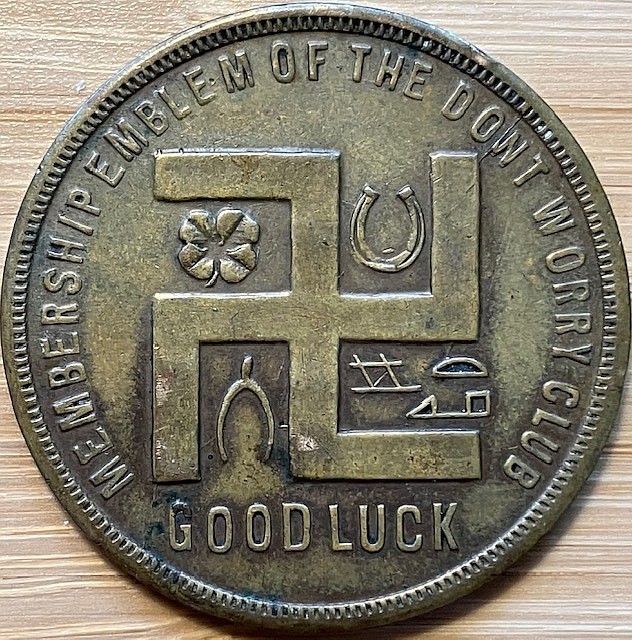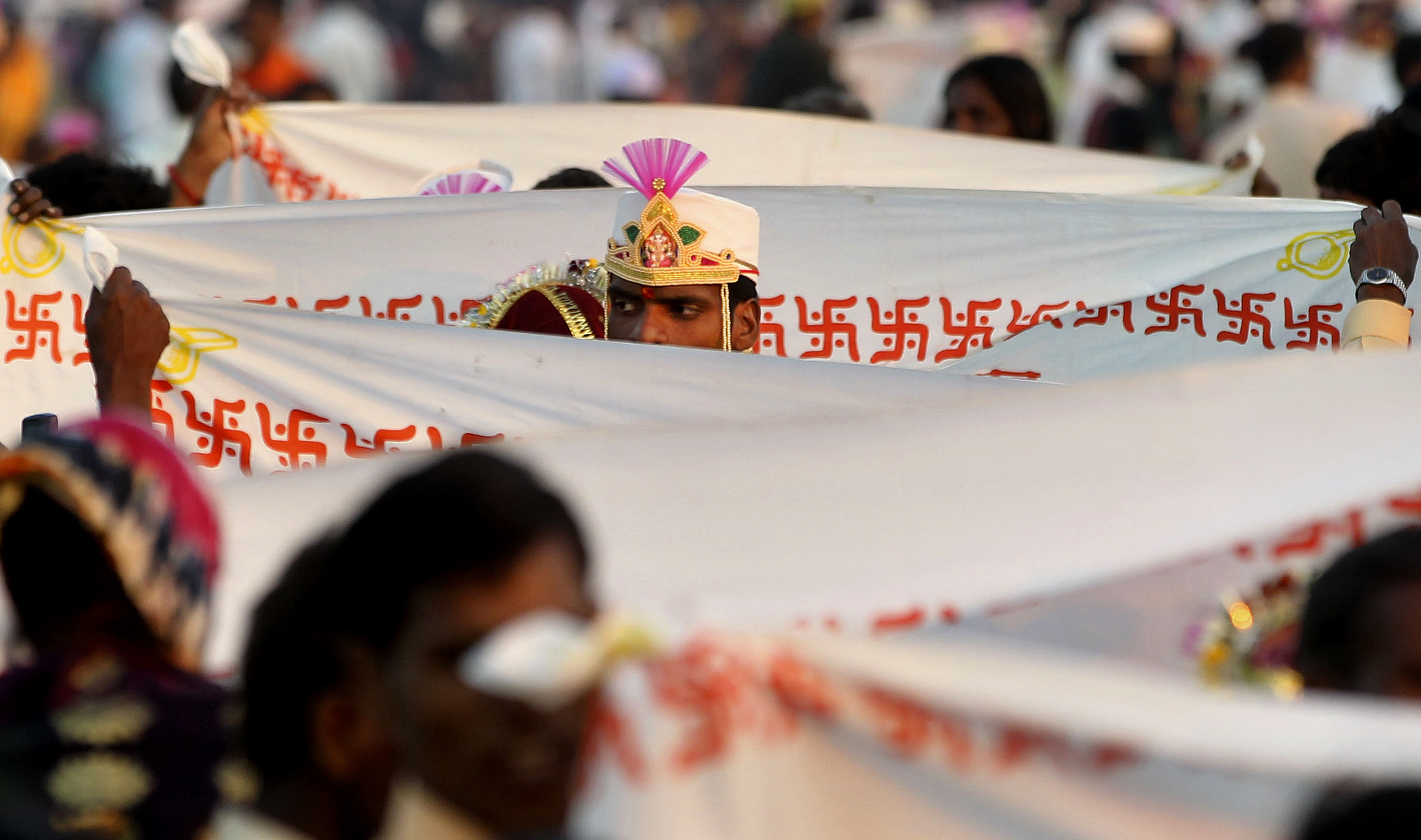In the West, the swastika is often equated to Adolf Hitler's "hakenkreuz" or the hooked cross -- a symbol of hate that evokes the trauma of the Holocaust and the horrors of Nazi Germany. Over the past decade, as the Asian diaspora grew in North America, calls to reclaim the swastika as a sacred symbol became louder. These minority faith communities are being joined by Native Americans whose ancestors used it in healing rituals.
The equilateral cross with its legs bent at right angles is a millennia-old sacred symbol in Hinduism, Buddhism and Jainism that represents peace and good fortune. Indigenous people worldwide used it similarly.
The symbol dates back to prehistoric times. The word "swastika" has Sanskrit roots and means "the mark of well being." It has been used in Hindu prayers, carved into the Jains' emblem, marked Buddhist temple locations and represented the four elements for Zoroastrians.
The symbol is ubiquitous in India today. It also has been found in the Roman catacombs as well as various places in Greece, Iran, Ethiopia, Spain and Ukraine.
The symbol was revived during the 19th-century excavations in the ancient city of Troy by a German archaeologist, who connected it to Aryan culture. Historians believe this is what made it appealing to the Nazi Party, which adopted it in 1920.
In North America, in the early 20th century, swastikas made their way into architectural features, military insignia and team logos. Coca-Cola issued a swastika pendant. The Boy Scouts awarded badges with the symbol until 1940.
The Rev. T.K. Nakagaki said he was shocked when he heard the swastika referred to as a "universal symbol of evil" at an interfaith conference. The New York-based Buddhist priest thinks of swastikas as synonymous with temples.
In his 2018 book titled "The Buddhist Swastika and Hitler's Cross: Rescuing a Symbol of Peace from the Forces of Hate," Nakagaki posits that Hitler referred to it as the hooked cross or hakenkreuz.
"You cannot call it a symbol of evil or [deny] other facts that have existed for hundreds of years, just because of Hitler," said Nakagaki, who believes more dialogue is needed.
The Coalition of Hindus of North America is among several faith groups leading the effort to differentiate the swastika from the hakenkreuz. They supported a new California law that criminalizes the public display of it, making an exception for the sacred swastika.
Pushpita Prasad, a spokesperson for the Hindu group, called it a victory, but said the legislation unfortunately labels the sacred symbol and Hitler's as swastikas.
It's led to self-censorship. Vikas Jain, a Cleveland physician, said his family hid images containing the symbol when they had visitors because of the lack of understanding. Jain says he stands in solidarity with the Jewish community, but is sad that he cannot freely practice his Jain faith.
Before WWII, the name "Swastika" was popular in North America, including for housing subdivisions in Miami and Denver, an upstate New York hamlet and a street name in Ontario. Some have been renamed while others continue to carry it.
For the Navajo people, the symbol represents the universe and life, said Patricia Anne Davis, an elder of the Choctaw and Dineh nations. She said Hitler took a spiritual symbol "and made it twisted."
In the early 20th century, traders encouraged Native artists to use it on their crafts. After it became a Nazi symbol, several tribes banned it.
"I understand the wounds and trauma that Jewish people experience when they see that symbol," Davis said. "All I can do is affirm its true meaning. ... It's time to restore the authentic meaning."
Jeff Kelman, a New Hampshire-based Holocaust historian, believes the hakenkreuz and swastika were distinct. Kelman, who takes this message to Jewish communities, is optimistic about the symbol's redemption.
"When they learn an Indian girl could be named Swastika and she could be harassed in school, they understand how they should see these as two separate symbols," he said. "No one in the Jewish community wants to see Hitler's legacy continue to harm people."
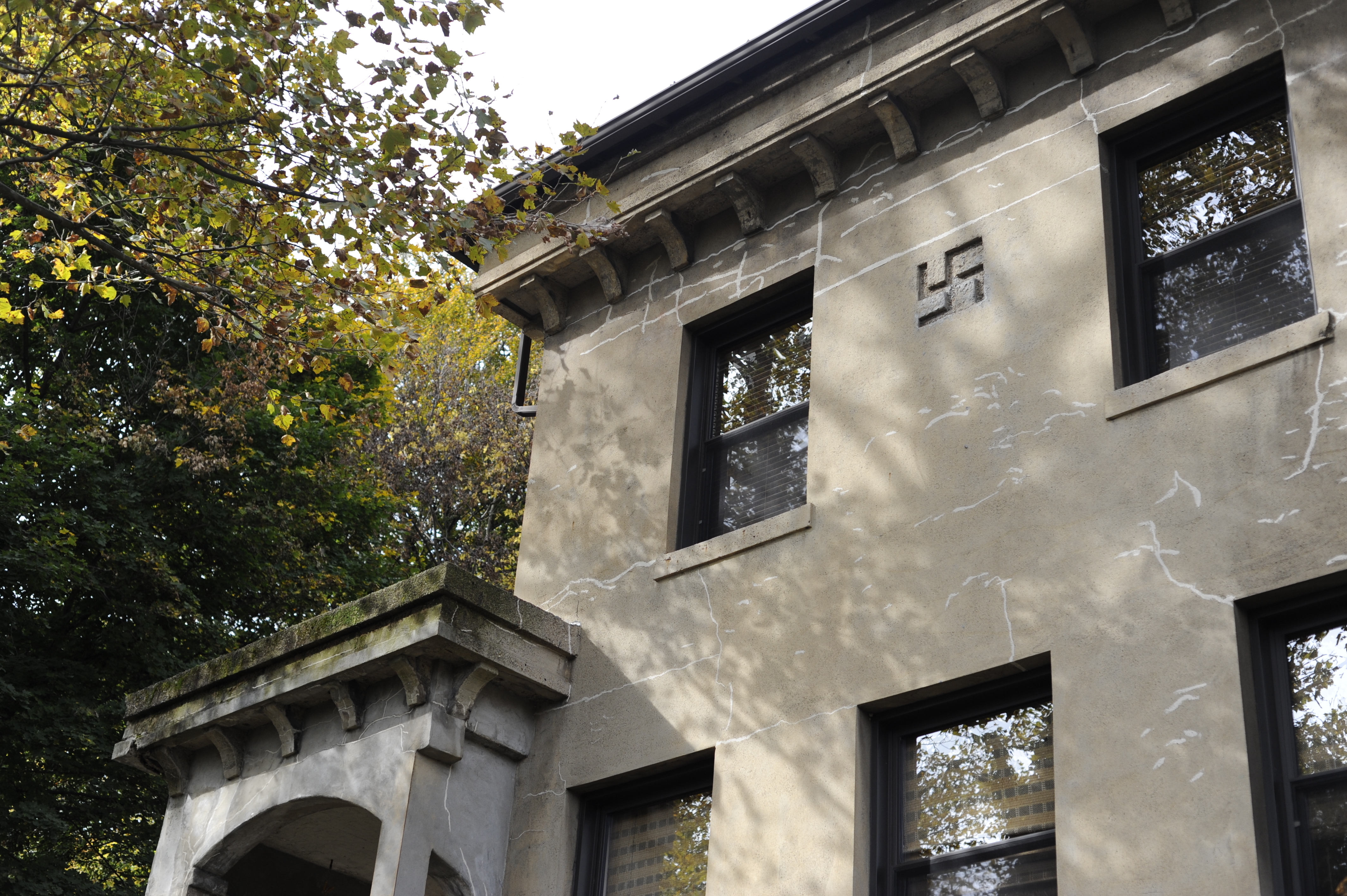 FILE - Thelma Smith's home on Andover Terrace in the Oakland neighborhood of Pittsburgh bears a swastika in the concrete above the entrance on Tuesday afternoon, Oct. 26, 2010. Built in 1912, long before Hitler's rise, the swastika is a Hindu symbol of the sun and is also a symbol of good luck. (Justin Merriman/Pittsburgh Tribune-Review via AP, File)
FILE - Thelma Smith's home on Andover Terrace in the Oakland neighborhood of Pittsburgh bears a swastika in the concrete above the entrance on Tuesday afternoon, Oct. 26, 2010. Built in 1912, long before Hitler's rise, the swastika is a Hindu symbol of the sun and is also a symbol of good luck. (Justin Merriman/Pittsburgh Tribune-Review via AP, File) Sheetal Deo and her husband, Sanmeet Deo, hold a Hindu swastika symbol in their home in Syosset, N.Y., on Sunday, Nov. 13, 2022. Hindus, Buddhists and Native Americans are trying to rehabilitate the swastika, a symbol of peace and prosperity, and to restore it to a place of sanctity in their faiths. (AP Photo/Andres Kudacki)
Sheetal Deo and her husband, Sanmeet Deo, hold a Hindu swastika symbol in their home in Syosset, N.Y., on Sunday, Nov. 13, 2022. Hindus, Buddhists and Native Americans are trying to rehabilitate the swastika, a symbol of peace and prosperity, and to restore it to a place of sanctity in their faiths. (AP Photo/Andres Kudacki)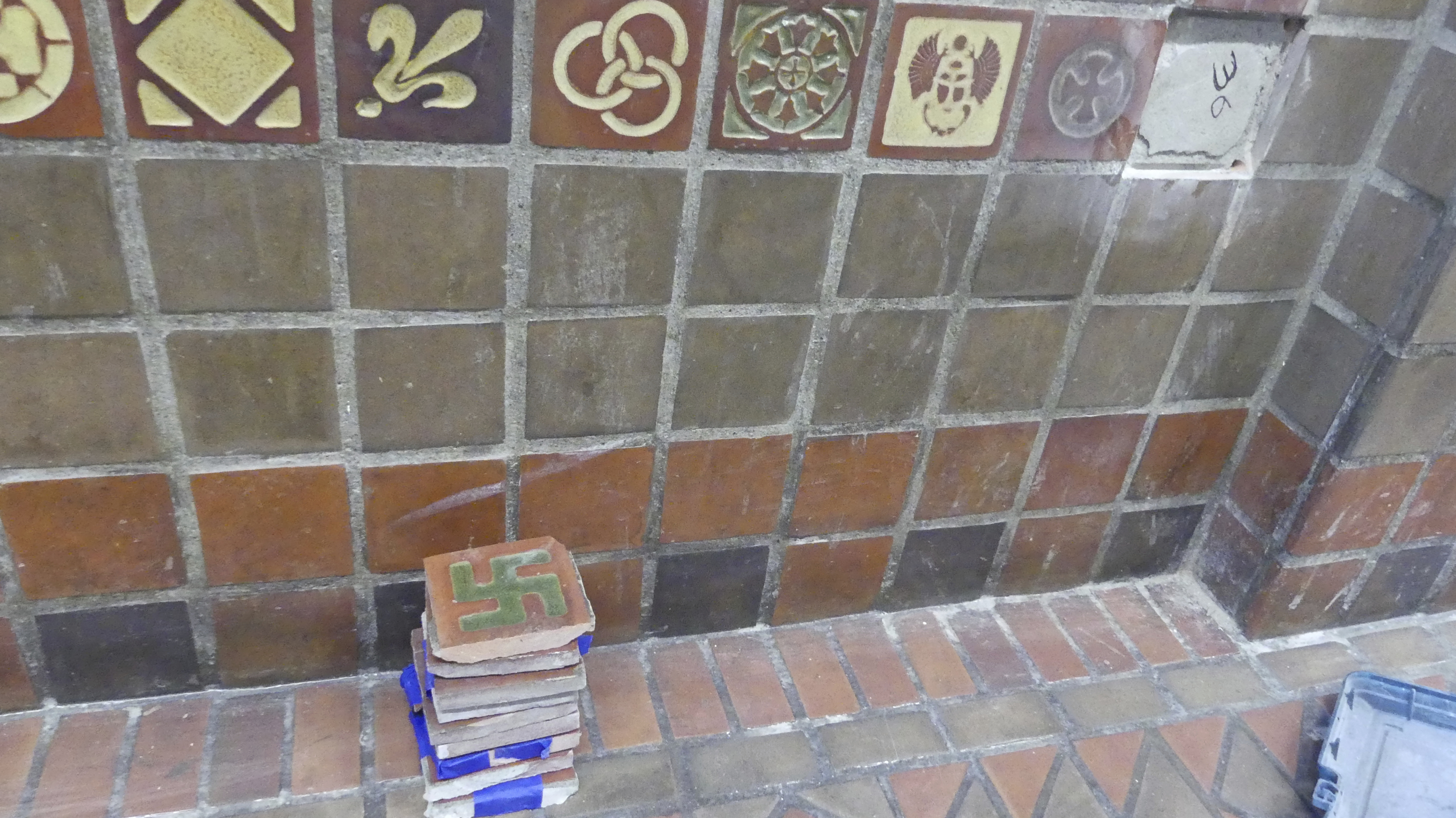 FILE - Tiles with swastikas have been removed from the Indiana University School of Public Health building in Bloomington, Ind., on Monday, July 8, 2019. The tiles were installed more than a century ago have been removed from the walls inside the Indiana University building. The Bloomington school says the tiles at the Indiana University School of Public Health classroom building were installed before the swastika was adopted as the symbol of the Nazi Party. They're among tiles that include symbols from different cultures. (Michael Reschke/The Herald-Times via AP)
FILE - Tiles with swastikas have been removed from the Indiana University School of Public Health building in Bloomington, Ind., on Monday, July 8, 2019. The tiles were installed more than a century ago have been removed from the walls inside the Indiana University building. The Bloomington school says the tiles at the Indiana University School of Public Health classroom building were installed before the swastika was adopted as the symbol of the Nazi Party. They're among tiles that include symbols from different cultures. (Michael Reschke/The Herald-Times via AP)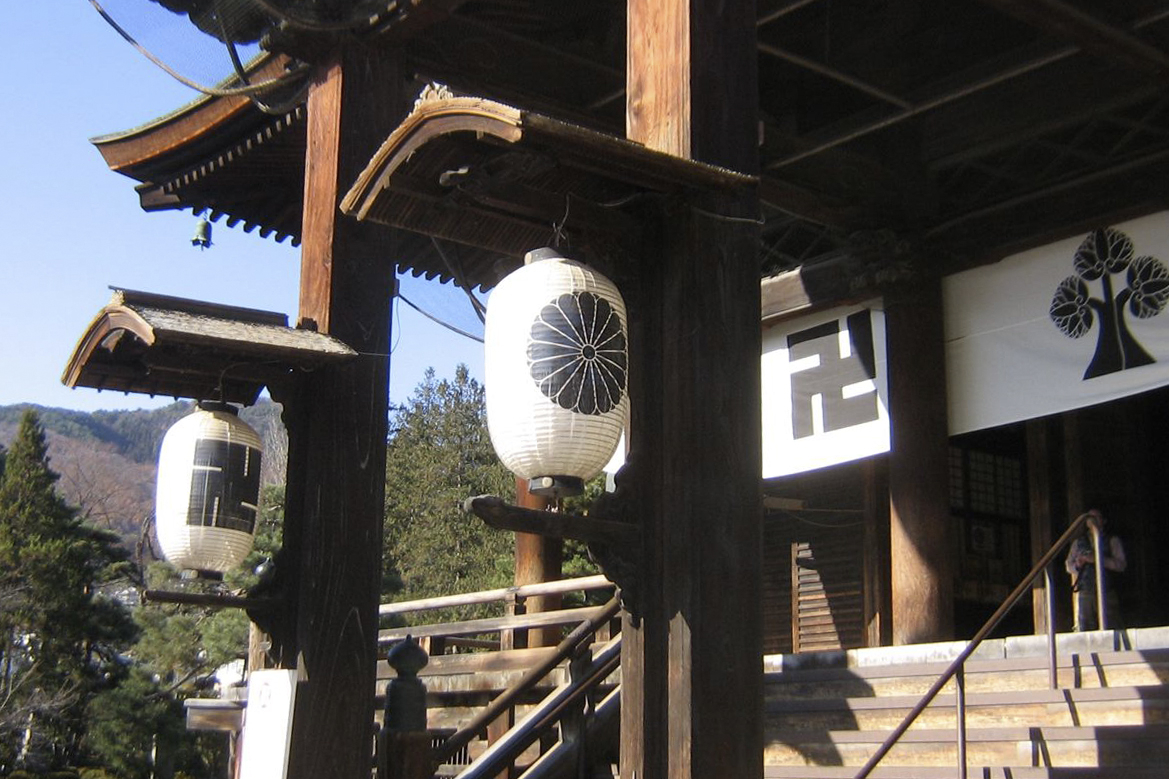 This photo provided by the Rev. TK Nakagaki in November 2022 shows the Zenko-jo Buddhist temple in Nagano, Japan, founded in 642 AD, Japan's first Buddhist temple. The swastika symbol is found in the temple's banners, paper lanterns, pillars, roof tiles and in the main shrine alongside the temple crest design of the hollyhock flower. (The Rev. TK Nakagaki via AP)
This photo provided by the Rev. TK Nakagaki in November 2022 shows the Zenko-jo Buddhist temple in Nagano, Japan, founded in 642 AD, Japan's first Buddhist temple. The swastika symbol is found in the temple's banners, paper lanterns, pillars, roof tiles and in the main shrine alongside the temple crest design of the hollyhock flower. (The Rev. TK Nakagaki via AP)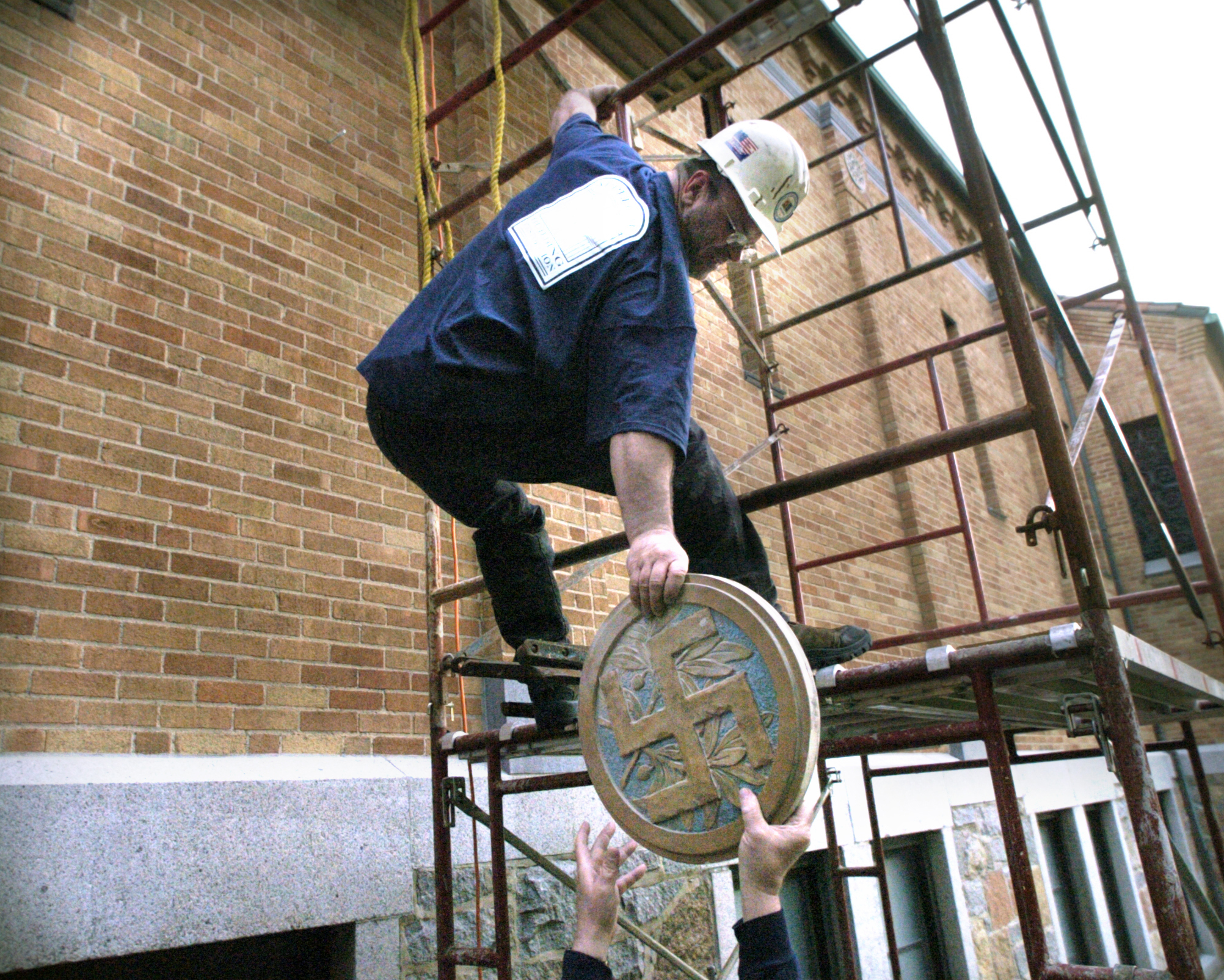 FILE - Brian Marquardt of Applegate Building Restoration lowers a Swastika symbol to the ground after it was removed from the north side of St. Mary's Cathedral in St. Cloud, Minn., Tuesday, May 2, 2006. The symbols were installed when the cathedral was constructed in the 1920s. (Dave Schwarz/St. Cloud Times via AP, File)
FILE - Brian Marquardt of Applegate Building Restoration lowers a Swastika symbol to the ground after it was removed from the north side of St. Mary's Cathedral in St. Cloud, Minn., Tuesday, May 2, 2006. The symbols were installed when the cathedral was constructed in the 1920s. (Dave Schwarz/St. Cloud Times via AP, File)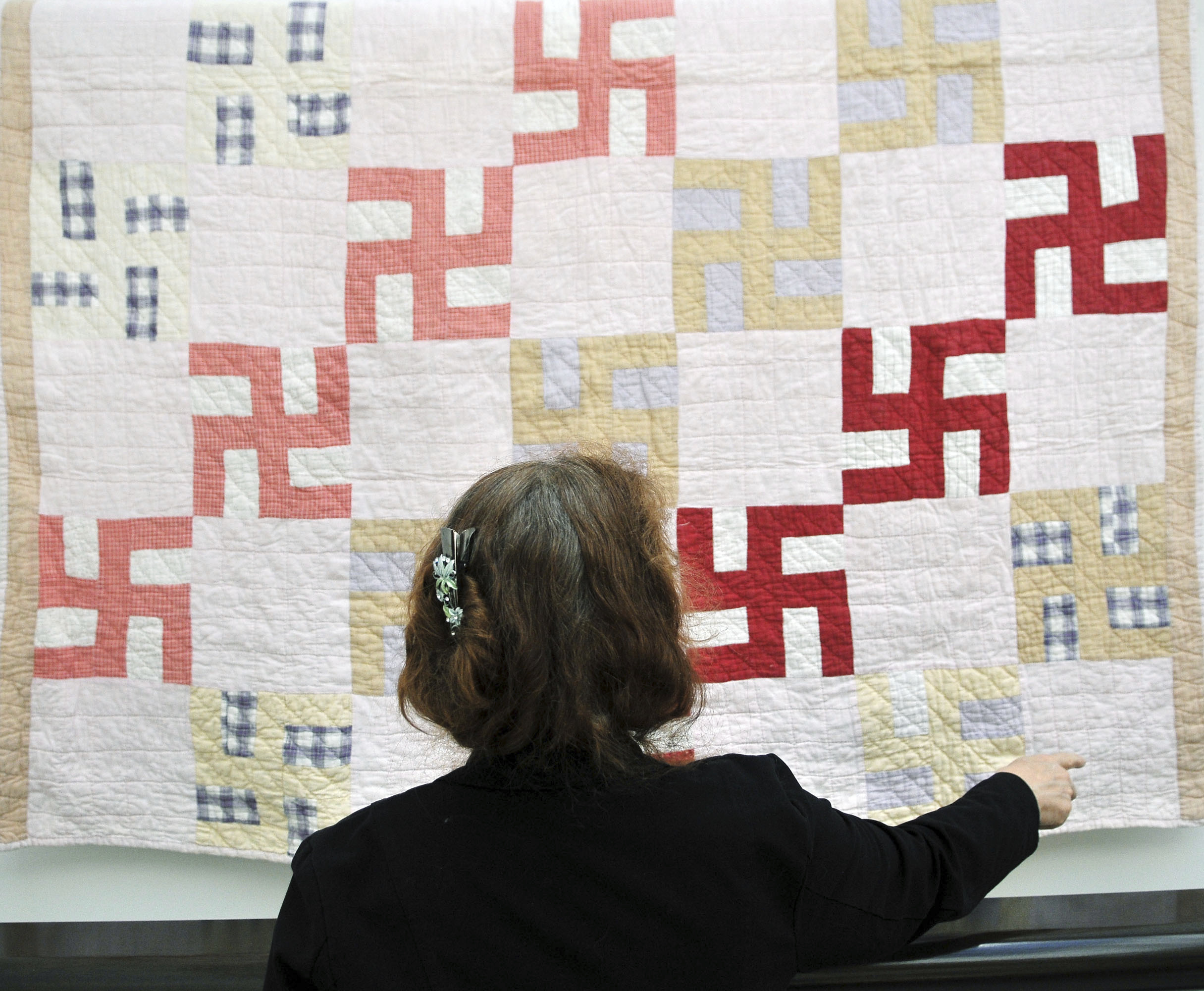 FILE - JoAnna Stull of the Greeley History Museum looks at a quilt decorated with swastikas in Greeley, Colo., on Friday June 18, 2010. The quilt was probably made before 1930, according to the family and the Greeley Museums. Hitler adopted the symbol in 1935. (Eric Bellamy/The Greeley Tribune via AP)
FILE - JoAnna Stull of the Greeley History Museum looks at a quilt decorated with swastikas in Greeley, Colo., on Friday June 18, 2010. The quilt was probably made before 1930, according to the family and the Greeley Museums. Hitler adopted the symbol in 1935. (Eric Bellamy/The Greeley Tribune via AP)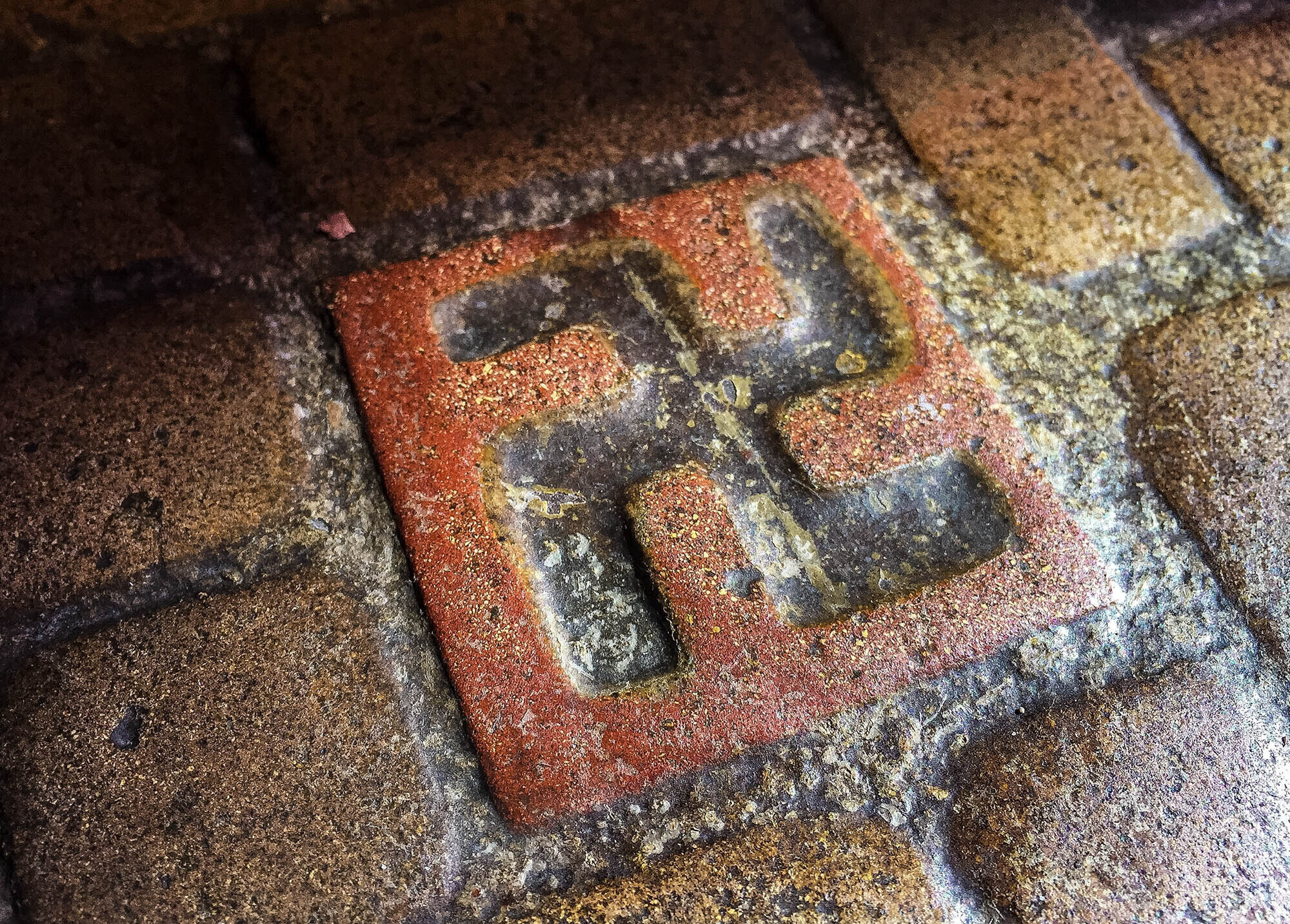 FILE - One of about 60 floor tiles emblazoned with swastika-style crosses in the entrance to the Longview Community Church in Longview, Wash., is seen on March 3, 2016. A Longview church established in 1925 bears tiles with symbols that were once seen as a sign of good fortune, but are now more closely associated with terror. (Marissa Luck/The Daily News via AP)
FILE - One of about 60 floor tiles emblazoned with swastika-style crosses in the entrance to the Longview Community Church in Longview, Wash., is seen on March 3, 2016. A Longview church established in 1925 bears tiles with symbols that were once seen as a sign of good fortune, but are now more closely associated with terror. (Marissa Luck/The Daily News via AP)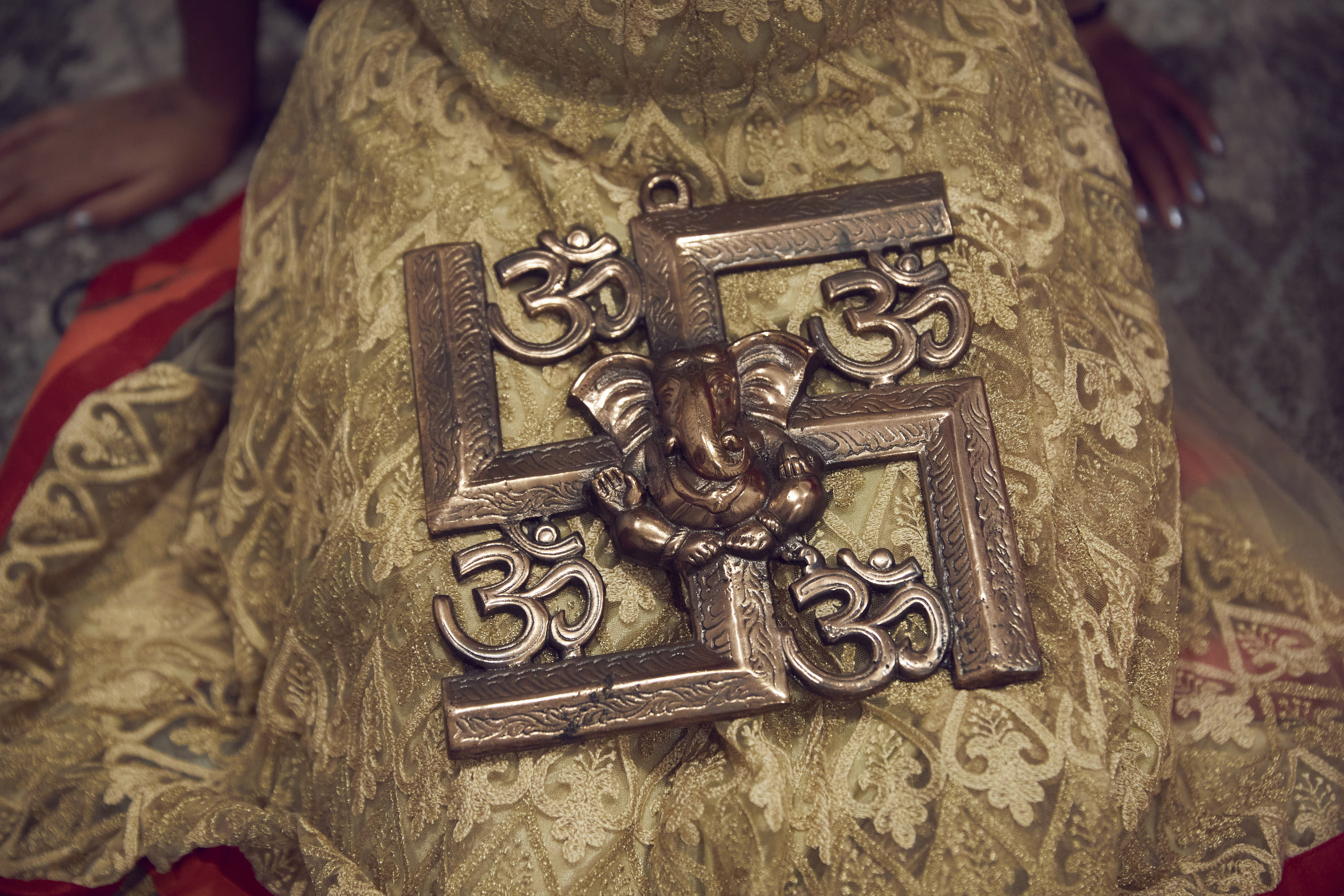 A Hindu swastika symbol is displayed at the home of Sheetal and Sanmeet Deo on Sunday, Nov. 13, 2022, in Syosset, N.Y. Hindus, Buddhists and Native Americans are trying to rehabilitate the swastika, a symbol of peace and prosperity, and to restore it to a place of sanctity in their faiths. (AP Photo/Andres Kudacki)
A Hindu swastika symbol is displayed at the home of Sheetal and Sanmeet Deo on Sunday, Nov. 13, 2022, in Syosset, N.Y. Hindus, Buddhists and Native Americans are trying to rehabilitate the swastika, a symbol of peace and prosperity, and to restore it to a place of sanctity in their faiths. (AP Photo/Andres Kudacki)